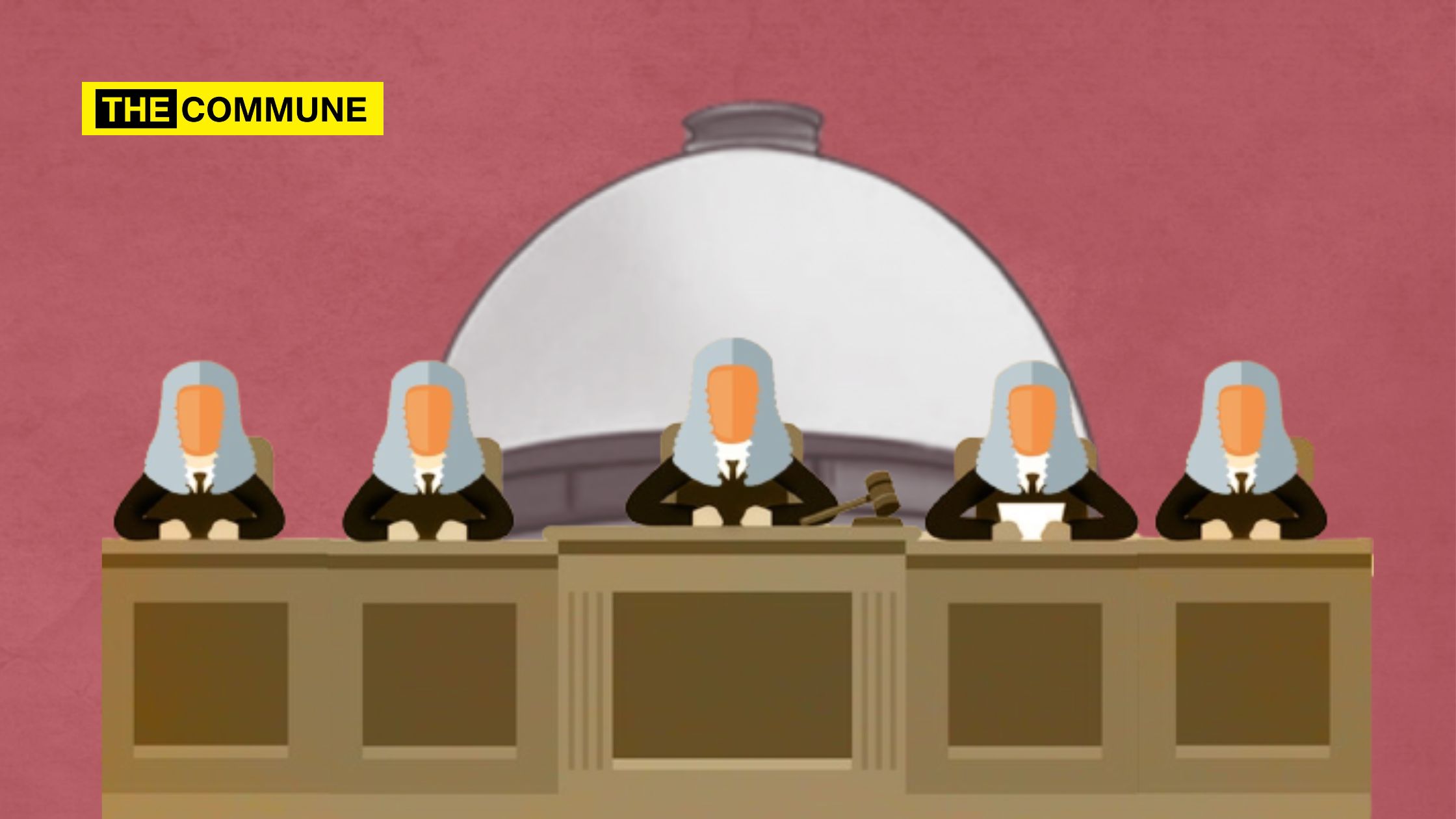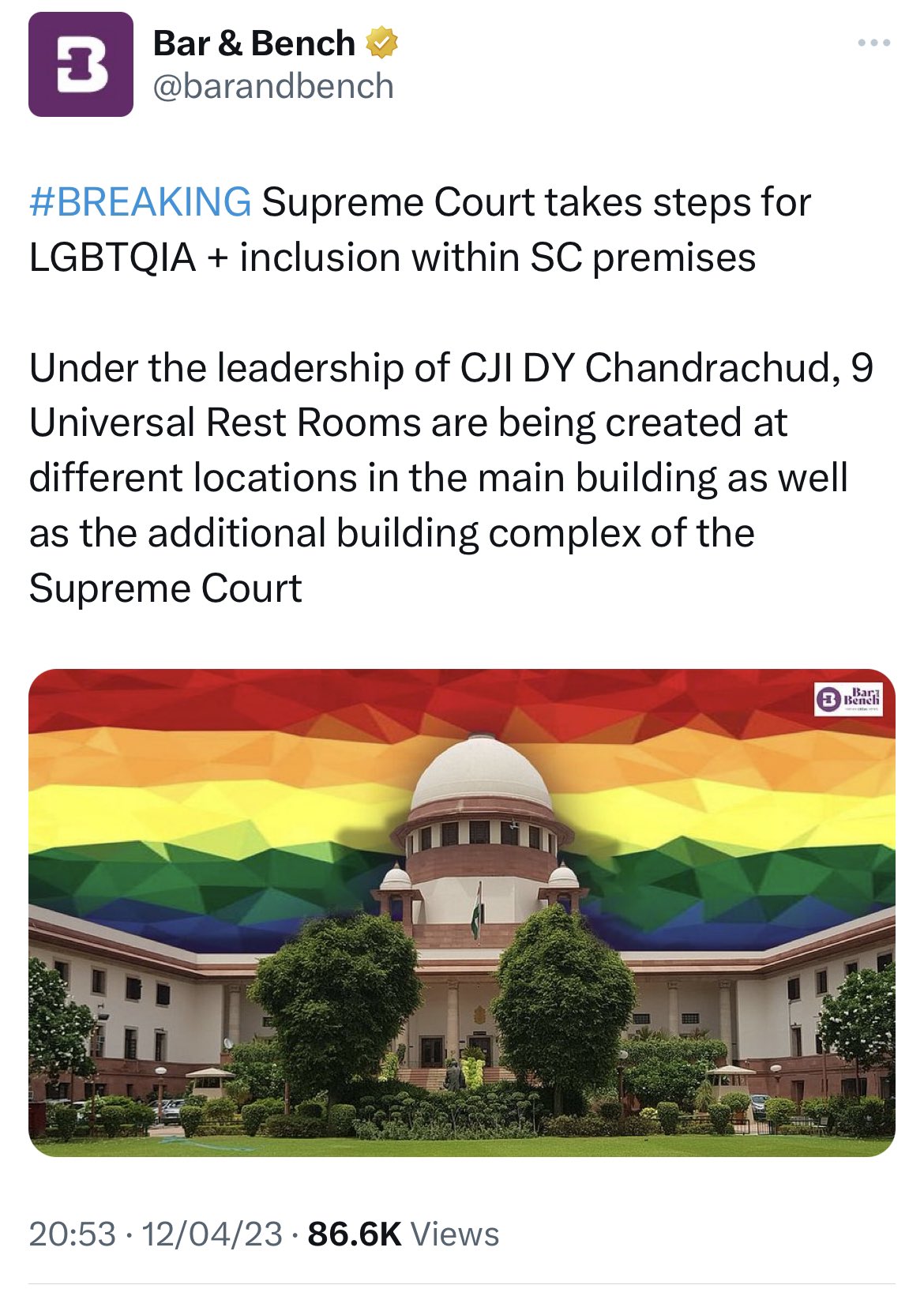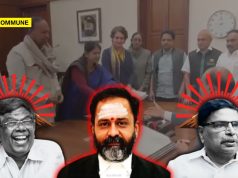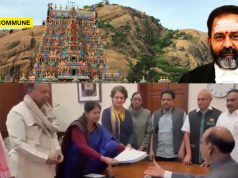
There is currently a heated debate over the state of India’s judicial system. Various government officials, including the Law Minister and Vice President, have made statements both for and against the need to overhaul the system. Recent decisions by the Supreme Court, such as involving the Chief Justice of India in selecting members and the Chief of the Election Commission, have fuelled this debate further by bringing in the points about the separation of powers and the proper role of the judiciary as envisaged in the constitution. Critics argue that judges participating in administrative processes could create conflicts of interest. This discussion follows demands to reform the judiciary, allegations of corruption against judges, and long-standing issues with court backlogs and vacancies. But time and time again the all-mighty judiciary has withstood attempts at reformation aimed at making the system transparent and has created a self-indulging towering institution that holds all the power without responsibility. In this context, as logical Indians we must debate and discuss about the system which presides over the country’s legal system. As the Lordships preside over matters of utmost importance to citizens, they must realise that no system is infallible, including Judiciary and citizens of the state want to witness a more transparent judicial system with checks and balances.
How Judges Who Upheld ‘Emergency’ Went Up The Ranks Without Accountability
The case being referred to here is the ADM Jabalpur case of 1976, also known as the “habeas corpus case”. During the Emergency in India, several people were detained by the government without trial or legal recourse. A group of petitioners had filed writ petitions in the Supreme Court of India seeking the release of these detainees. However, in a controversial judgment, most of the judges in the Supreme Court, including Justice Yeshwant Vishnu Chandrachud, Justice K.K. Mathew, Justice Mirza Hameedullah Beg, and Chief Justice A.N. Ray ruled that during the Emergency, the right to life and personal liberty could be suspended, and that the courts could not interfere with the government’s actions, even if they were illegal. Only Justice H.R. Khanna dissented from the majority opinion and held that the right to life and personal liberty could not be suspended even during an emergency. The decision of the majority of judges in the ADM Jabalpur case has been widely criticized for eroding the independence of the judiciary and for upholding a gross violation of human rights. The fact that the family members of some of the judges who upheld the Emergency in this case have gone on to hold influential positions in the judiciary or government has led to further questions about the accountability and transparency of the judicial system.
Justice YV Chandrachud was one of the judges who upheld the Emergency in India in the ADM Jabalpur case. After his retirement, he was appointed as the Governor of Maharashtra and then as the Chairman of the Press Council of India. His son, Dhananjay Chandrachud, is currently CJI of India. Justice KK Mathew is another judge who wrote in favour of the government in this case. After his retirement, he was appointed as the Chairman of the Law Commission of India. His son, Kurian Joseph, was also a judge in the Supreme Court of India. Another Judge was Justice Beg, after his retirement, he was appointed as the Chairman of the National Herald newspaper, which is a mouthpiece of Congress. Finally, Justice AN Ray, was the Chief Justice of India during the Emergency and had also upheld the Emergency in India in the ADM Jabalpur case. His son, Dipak Kumar Ray, was a judge of the Allahabad High Court and later served as the Chief Justice of the Patna High Court.
It is true that it is up for anyone to speculate whether there was a ‘quid-pro-quo’ or not between the judiciary and government then, but the situation has opened enough speculations that judges who wield the pen are no saints.
Fallacy Of Judicial Appointment System
In the days of ADM Jabalpur, it was an executive driven appointment system. To revamp it, the Supreme Court came up with a collegium system on its own albeit doubtful results, bypassing constitutional mandates. The current system of judicial appointment has emerged through the ‘Three Judges Case.’ It refers to 3 Supreme Court judgments in the 1980s-1990s that established the Collegium system for appointing judges to the higher judiciary. Before this, the appointment of judges was made by the executive branch of the government, which some believed led to political interference in the judiciary. Under the Collegium system, the Chief Justice of India, and a group of senior judges of the Supreme Court make recommendations for the appointment and transfer of judges in the higher judiciary. The system was designed to ensure the independence of the judiciary and prevent political interference in the appointment process. However, what emerged as a possible solution became a menace soon. The Collegium system has faced criticism over the years. The situation has become akin to the fence eating the crop. One of the main criticisms is that the process is not transparent, as there is no public disclosure of the criteria used to select judges or the reasons for rejecting candidates. This lack of transparency has led to allegations of nepotism and favouritism in the appointment process.
There have been several instances of criticism against the Collegium system, which is responsible for the appointment and transfer of judges in the higher judiciary in India. We must look at these instances which has come from within the judicial system to have an informed understanding. In 2015, a group of retired judges and lawyers wrote a letter to the then Chief Justice of India, H.L. Dattu, expressing concern over the lack of transparency in the Collegium system. They stated that there was no public disclosure of the criteria used to select judges or the reasons for rejecting candidates, which they believed led to allegations of nepotism and favouritism. In 2018, four senior judges of the Supreme Court held a press conference to publicly criticize the functioning of the Collegium system. Justices Jasti Chelameswar, Ranjan Gogoi, Madan Lokur, and Kurian Joseph alleged that the Collegium system was “opaque and arbitrary” and cited examples of allegedly deserving candidates being passed over for promotion or appointment. They also questioned the lack of diversity in the judiciary. In 2019, former Supreme Court judge, Justice A.K. Ganguly, had also expressed concerns about the lack of transparency in the collegium system, stating that the process was “opaque” and that there was no way to determine the criteria used for selecting judges. He had called for greater accountability and transparency in the appointment process. In 2021, former Supreme Court judge Markandey Katju criticized the Collegium system in an opinion piece in the Indian Express. He argued that the Collegium system was responsible for the appointment of “mediocre” judges and that the judiciary needed serious reform. He suggested that the appointment process should be made more transparent and that there should be a system of oversight to ensure that the best candidates were selected for the job. All these instances were after the attempted passing of NJAC and still judiciary is resisting the reforms.
In 2015, the government had proposed the National Judicial Appointments Commission (NJAC) to replace the collegium system. However, the Supreme Court had struck down the NJAC, citing concerns over its constitutionality. But did the Supreme Court suggest an alternative path? The answer is ‘No’. The Supreme Court has not only stuck down something reformatory in the process but also held on to the system which has proven itself to be opaque, questionable, and disastrous for smooth functioning of Justice system. It seems that data tell us in India, ‘Justice is always denied because it was delayed.’
Judicial Priorities
The collegium system has also been criticized for its failure to address the issue of judicial vacancies. As of January 2022, there were over 400 vacancies in the higher judiciary, which has contributed to the growing backlog of cases in the Indian judicial system. According to data from the National Judicial Data Grid, as of December 2021, there were over 47 million pending cases in the Indian judicial system, including over 4 million cases pending in the high courts. Critics have argued that the collegium system is not equipped to handle the issue of vacancies and that a more structured process is needed.
Instead of resolving this logjam, the current Chief Justice of India is more concerned about why the toilets in Supreme Court have only male and female signs and not a universal toilet where “gender non-confirming” people can come and relieve themselves.

Lack Of Diversity And Representation
Then there is the issue of lack of diversity in the judiciary. According to a report by the Vidhi Centre for Legal Policy, as of 2019, only 11.3% of judges in High Courts were from the Scheduled Castes (SC) and Scheduled Tribes (ST) communities, while these communities make up about 25% of India’s population. In the Supreme Court, the representation of SC/ST judges has been historically low, with only 6 out of the 247 judges appointed till September 2021 belonging to these communities. The representation of Other Backward Classes (OBCs) in the judiciary is also low. According to the same Vidhi report, as of 2019, only 12.5% of judges in High Courts were from the OBC community, while they make up about 41% of India’s population. In the Supreme Court, there have been only a few OBC judges till date. The case is same regarding representation of Christians and Muslims also. According to the same Vidhi report, as of 2019, only 6% of judges in High Courts were Muslims, while they make up about 14% of India’s population. The representation of Christians is even lower, with only 0.7% of judges in High Courts being Christians, while they make up about 2.3% of India’s population. With respect to gender, women are also underrepresented in the higher judiciary. As of 2021, there are only 11 women judges out of a total of 34 judges in the Supreme Court of India, and the representation of women in the high courts is also low. While judiciary has pushed through reservation and equal representation in all sectors, the same judiciary itself has fallen wayside in ensuring diversity in the judiciary.
The Controversies
Justice Ranjan Gogoi was appointed as the 46th Chief Justice of India in October 2018. However, in April 2019, he faced allegations of sexual harassment by a former female employee of the Supreme Court. The woman had submitted a complaint to the Secretary General of the Supreme Court, which was later placed before a three-member in-house committee consisting of Justices S.A. Bobde, Indu Malhotra, and Indira Banerjee. However, Justice Gogoi presided over the committee as its head, which led to criticism that he was presiding over his own case and that it violated the principles of natural justice. The principle of natural justice requires that a person cannot be a judge in his or her own case. The idea behind this principle is that a judge must be impartial and unbiased, and it is not possible for a person to be impartial in a case where they are personally involved. In Justice Gogoi’s case, critics argued that he should have recused himself from the committee to ensure that the allegations against him were investigated impartially. However, Justice Gogoi defended his decision to preside over the committee, stating that it was necessary to uphold the integrity of the judiciary. The matter sparked a debate about the independence and impartiality of the judiciary, as well as the need for better mechanisms to handle allegations of sexual harassment in the workplace. Ultimately, the in-house committee cleared Justice Gogoi of the allegations, but the controversy surrounding the case highlighted the importance of ensuring that the judiciary upholds the principles of natural justice and is accountable to the people it serves.
Another Chief Justice who was embroiled in controversy was N.V.Ramana. In 2014, the then Chief Justice of Andhra Pradesh High Court, Justice Kalyan Jyoti Sengupta, had written to the Chief Justice of India alleging that Justice Ramana was involved in a land scam in Andhra Pradesh.
The allegations pertained to the sale of government land in Amaravati, the proposed capital city of Andhra Pradesh, during Justice Ramana’s tenure as a judge in the Andhra Pradesh High Court. Justice Sengupta alleged that the land was sold to benami (anonymous) buyers at low prices, and that Justice Ramana’s name had come up in the investigation into the scam. In 2020, another controversy erupted when a letter written by Andhra Pradesh Chief Minister Y.S. Jagan Mohan Reddy was leaked to the media. The letter alleged that Justice Ramana was influencing the functioning of the Andhra Pradesh High Court to protect certain interests, and that he had close links with a former judge who had been implicated in a corruption case. Despite the allegations, Justice Ramana was appointed as the Chief Justice of India in April 2021.
These issues have been particularly concerning for any citizens as it has become difficult to believe judiciary only works in a transparent manner. The Lordships must address these concerns by standing up and facing the allegations, so that truth comes out.
Please Do Not Initiate Another Contempt Of Court
There have been several instances of contempt of court in recent times in India showing the ‘thin skinned’ nature of Indian judiciary and the author fears that he will be one among them if the author proceeds further. One of the most prominent cases in recent times showing this thin-skinned nature was against senior lawyer Prashant Bhushan, who was held guilty of contempt of court for his tweets criticizing the judiciary. But the attempt of judiciary to bend his knees failed as he filed a review on top of only paying 1 rupee in fine. Another case was against stand-up comedian Kunal Kamra, who was accused of contempt for his tweets against the Supreme Court. The Delhi High Court also initiated contempt proceedings against news anchor Amish Devgan for his derogatory remarks against a Sufi saint. Indian judiciary is intolerant of criticism and dissent and it is evident from these instances. It seems that the only instance where in the Hon’ble Court indulge in allowing dissent is only in judgements.
There is an old proverb even though its origin is not clear it holds true in case of Indian Judiciary “The caravan moves on and the dogs bark.”
This quote means that despite obstacles or criticisms, progress will continue to happen. The Indian judiciary shall welcome the reforms to allay fears of citizens and to set aside concerns regarding its functioning. If the concerns of citizens are set aside the judiciary is ought to lose the trust of people whose rights it intends to protect. Thus, your Lordships may accept this humble petition to reform our precious judiciary.
Click here to subscribe to The Commune on Telegram and get the best stories of the day delivered to you personally.




